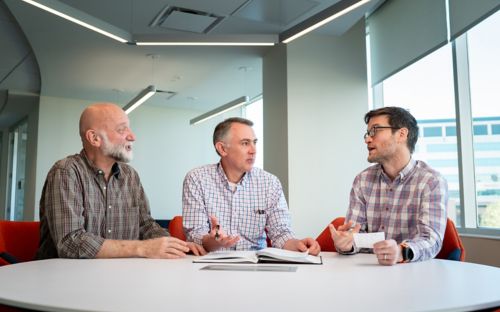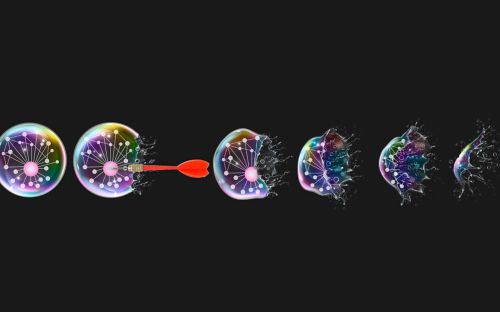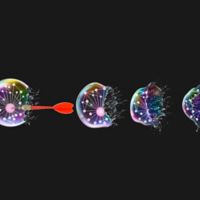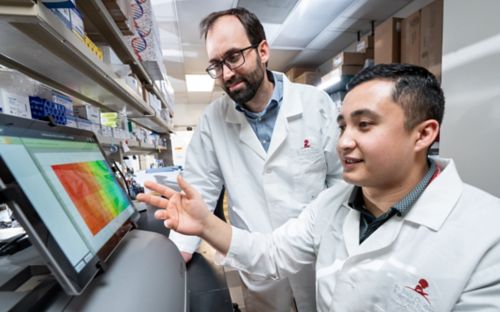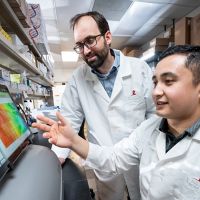Genetic variations in a fourth gene linked to elevated leukemia risk in Hispanic children
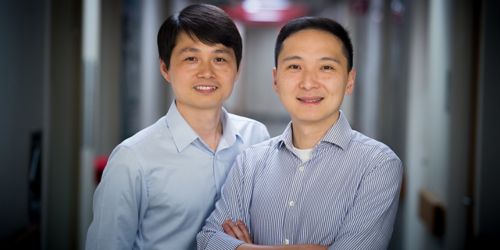
From left, researchers Maoxiang Qian, PhD, and Jun J. Yang, PhD, Hematological Malignancies Program.
Acute lymphoblastic leukemia ALL is the most common childhood cancer, and Hispanic children have the nation's highest incidence of the disease. They are also less likely than other children with ALL to survive.
Through genome wide association studies, we found genetic variations in a fourth gene that are associated with an increased risk of ALL in Hispanic children. The gene is ERG, a transcription factor that is also mutated in the leukemic cells of some ALL patients. In this study, we identified inherited genetic variations in ERG that contribute to ALL risk, primarily in Hispanic children. These are germline variants carried in cells throughout the body, rather than the previously reported somatic mutations in cancer cells.
The research was published online in the journal Blood.
The more we understand the biology behind these disparities, the more likely we are to develop more effective therapies for different patient populations or better methods to track and monitor disease risk.
Ancestry and ALL risk
The study was a collaboration with the Children's Oncology Group and one of the largest efforts yet focused on Hispanic patients with ALL.
My colleagues and I compared common genetic variations in 940 Hispanic ALL patients enrolled in COG clinical trials and 681 individuals of similar backgrounds without an ALL diagnosis. COG is the world's largest cooperative pediatric cancer research organization.
Gene variations were used to determine a patient's European, African and Native American ancestry. Hispanic individuals in this study were defined as having more than 10% Native American gene variations as well as having more Native American than African gene variations.
After confirming previous findings that high-risk genetic variations in ARID5B, GATA3 and PIP4K2A were more common in Hispanic children and were associated with an increased chance of developing ALL, we then identified high-risk variations in ERG that were associated with a 1.56-fold increased risk of ALL in Hispanic children. The absolute risk of getting ALL, however, remains low.
The increase in risk was highest (doubled) for children with the highest percentage of Native American ancestry and lowest for children with the lowest percentage. That was surprising — for all the leukemia genes researchers discovered before, their effects on ALL genetic risk are usually consistent across ancestries.
In contrast, we found no significant increased ALL risk in African-American children with the ERG variant and just a 12% elevated risk in children of European ancestry.
Additional research is needed to understand the mechanism involved, including possible unidentified environmental or other factors that might play a role.

